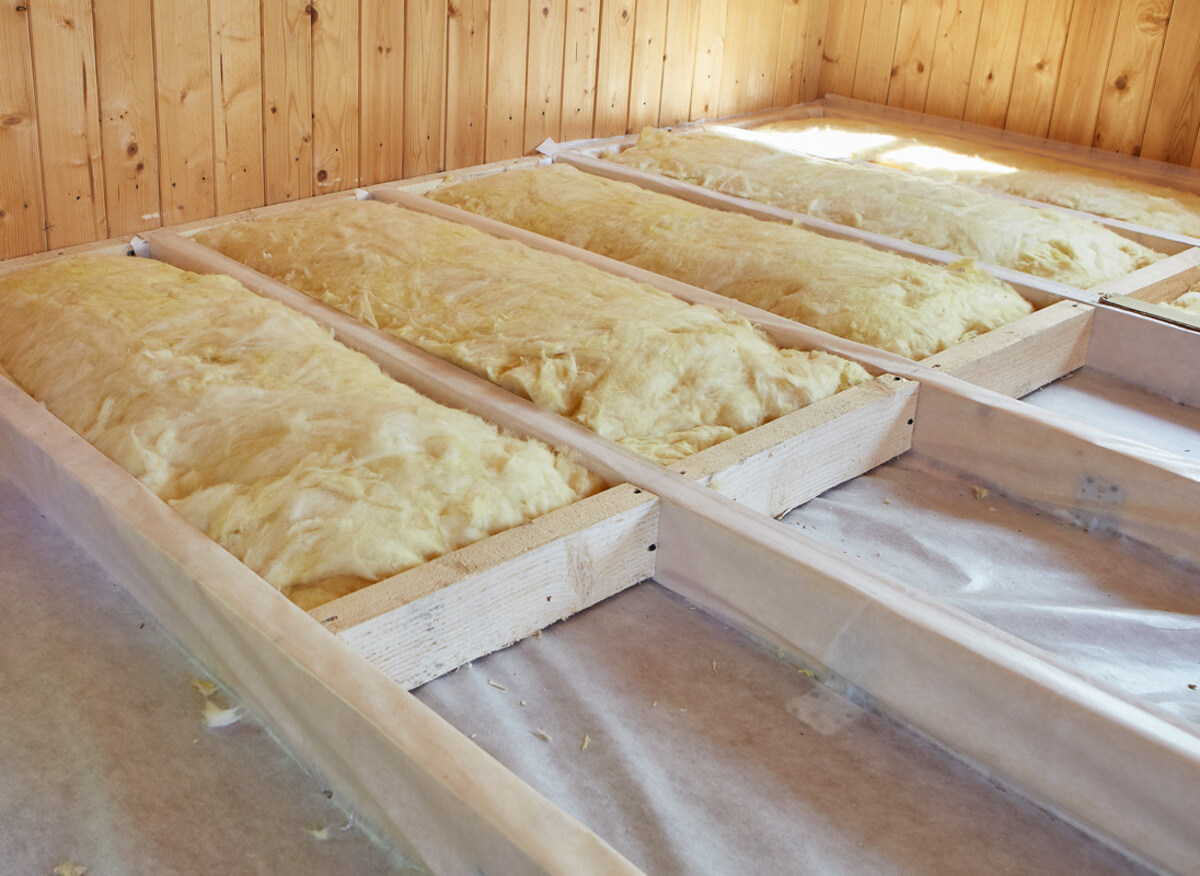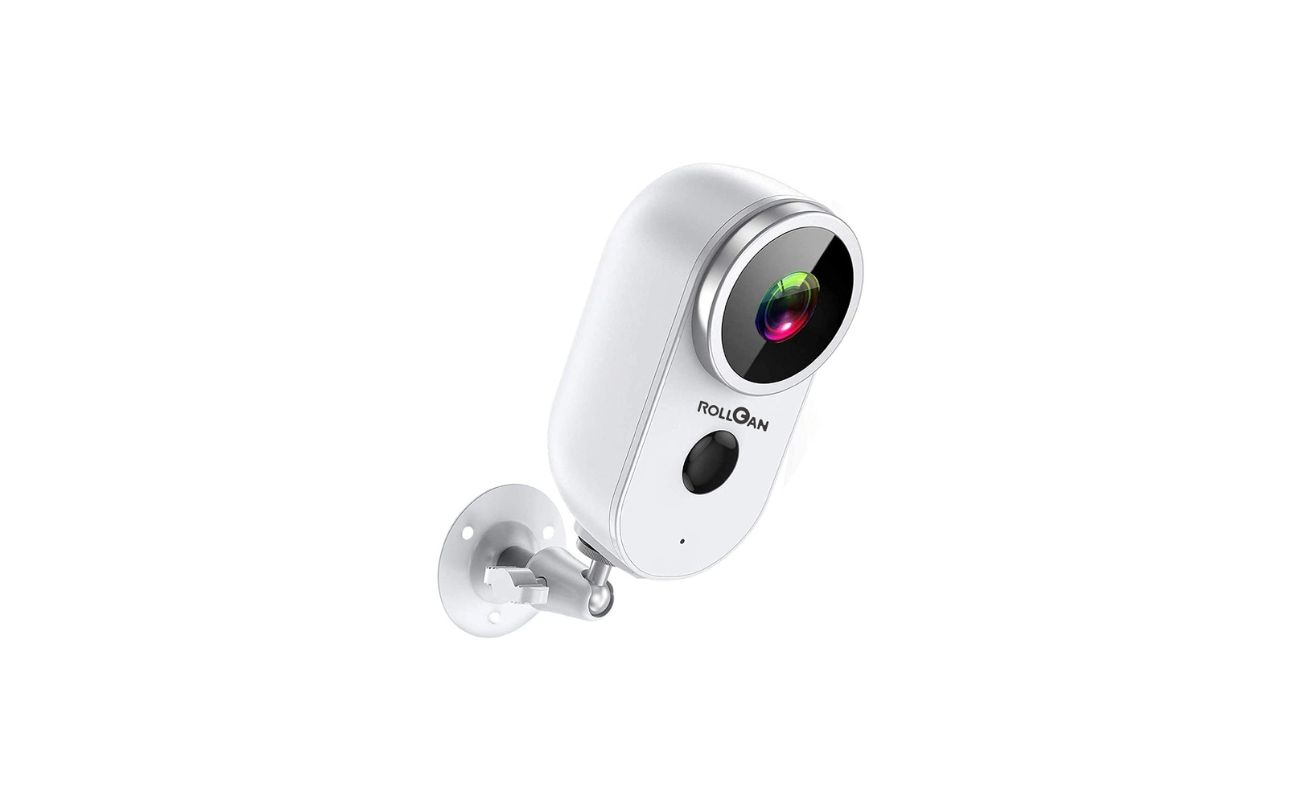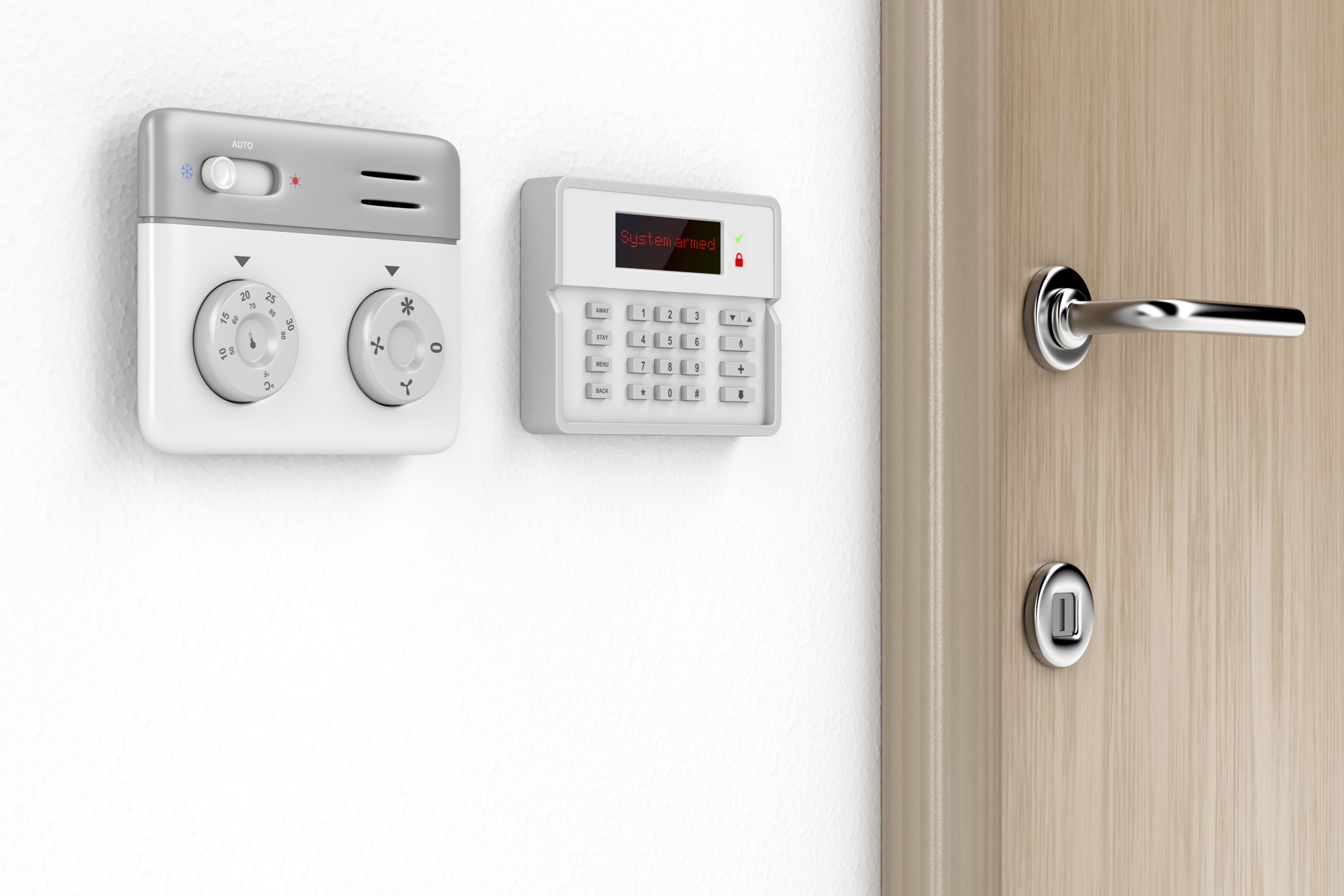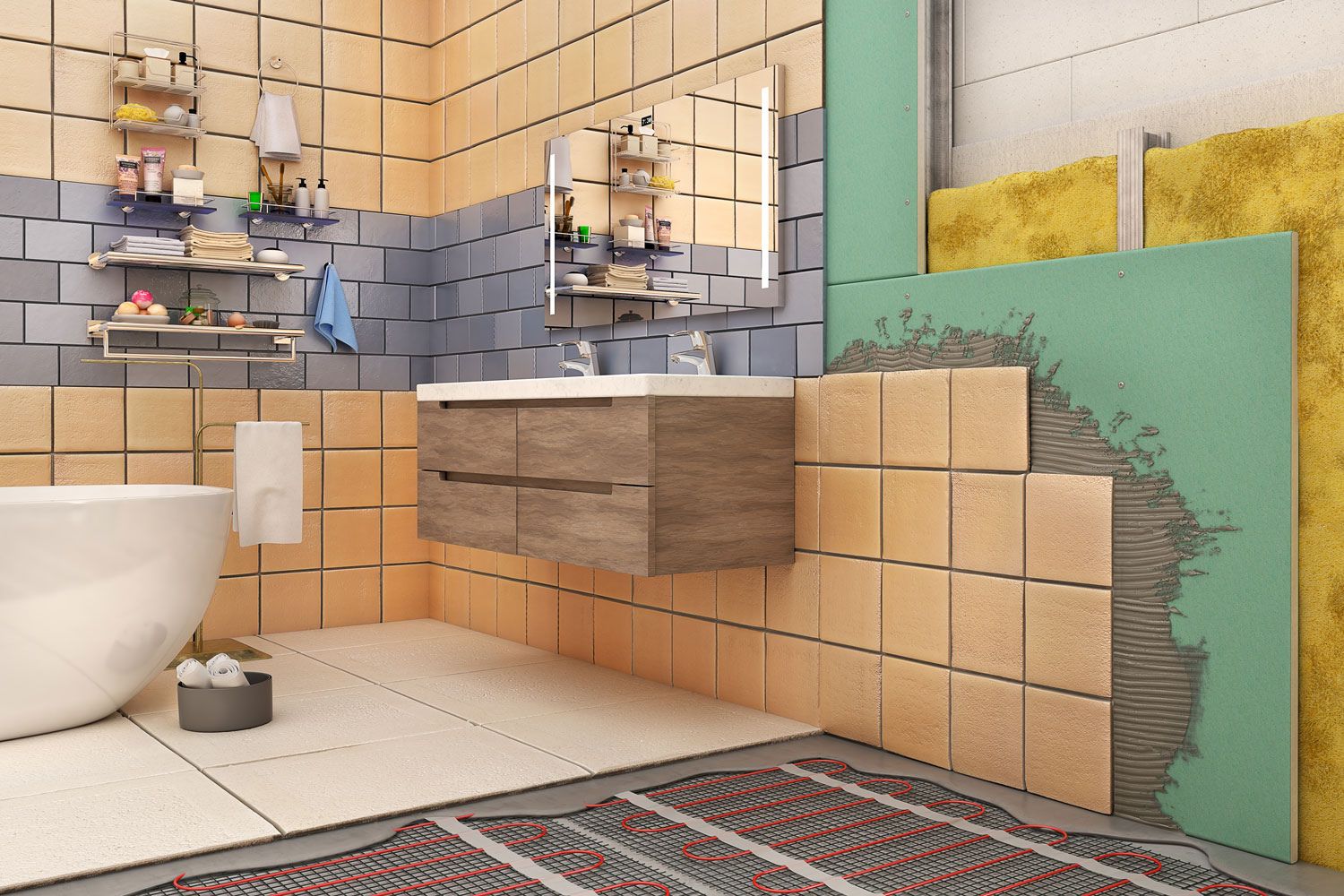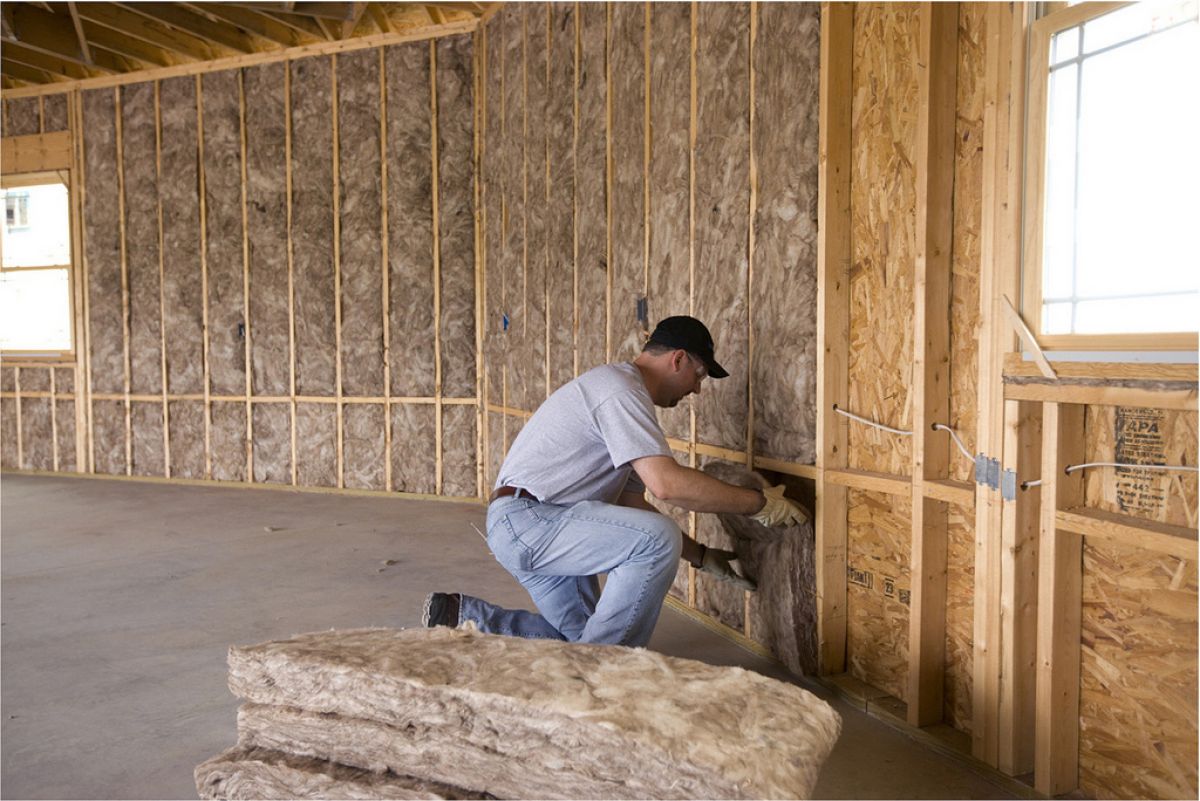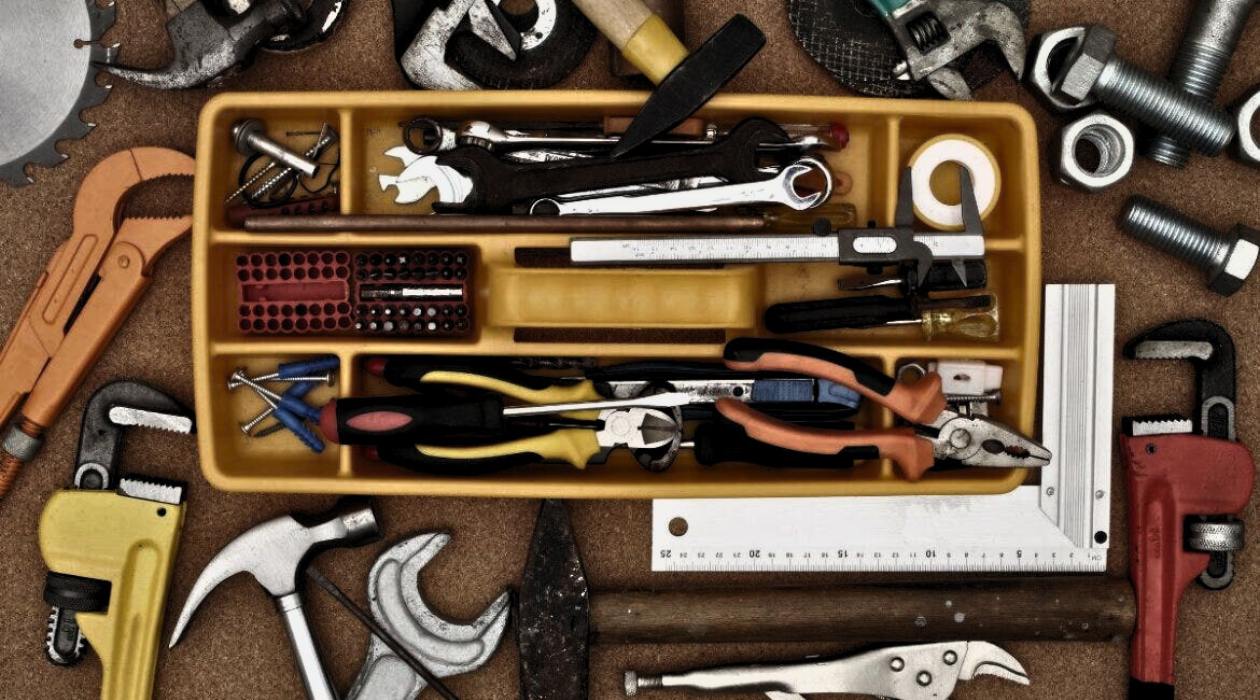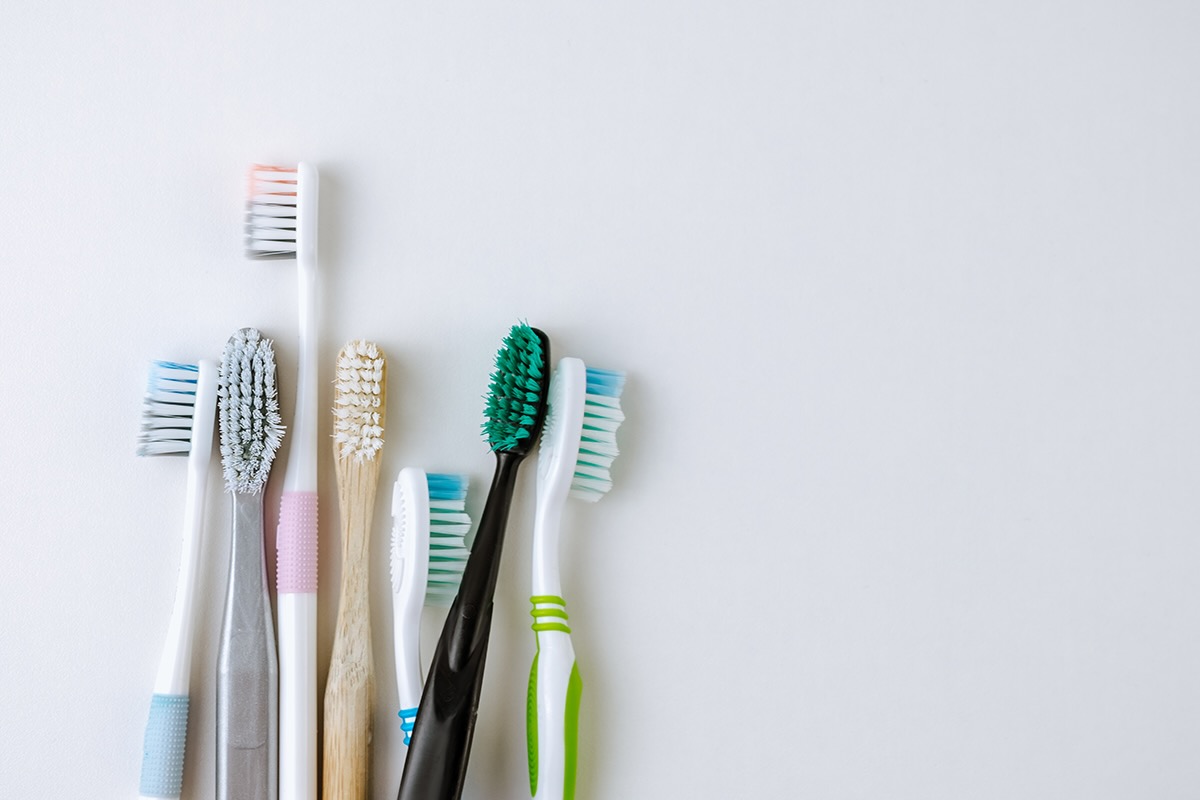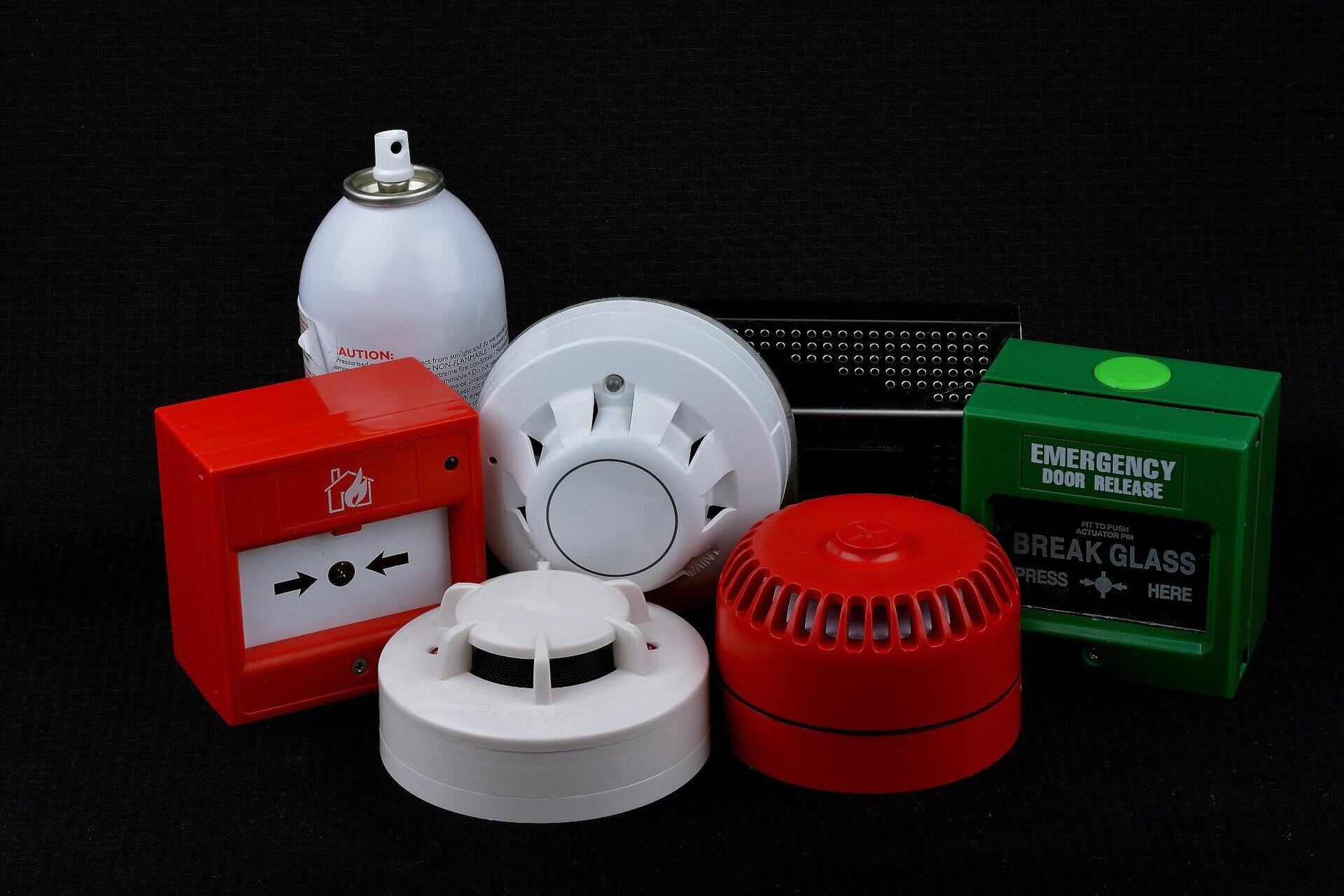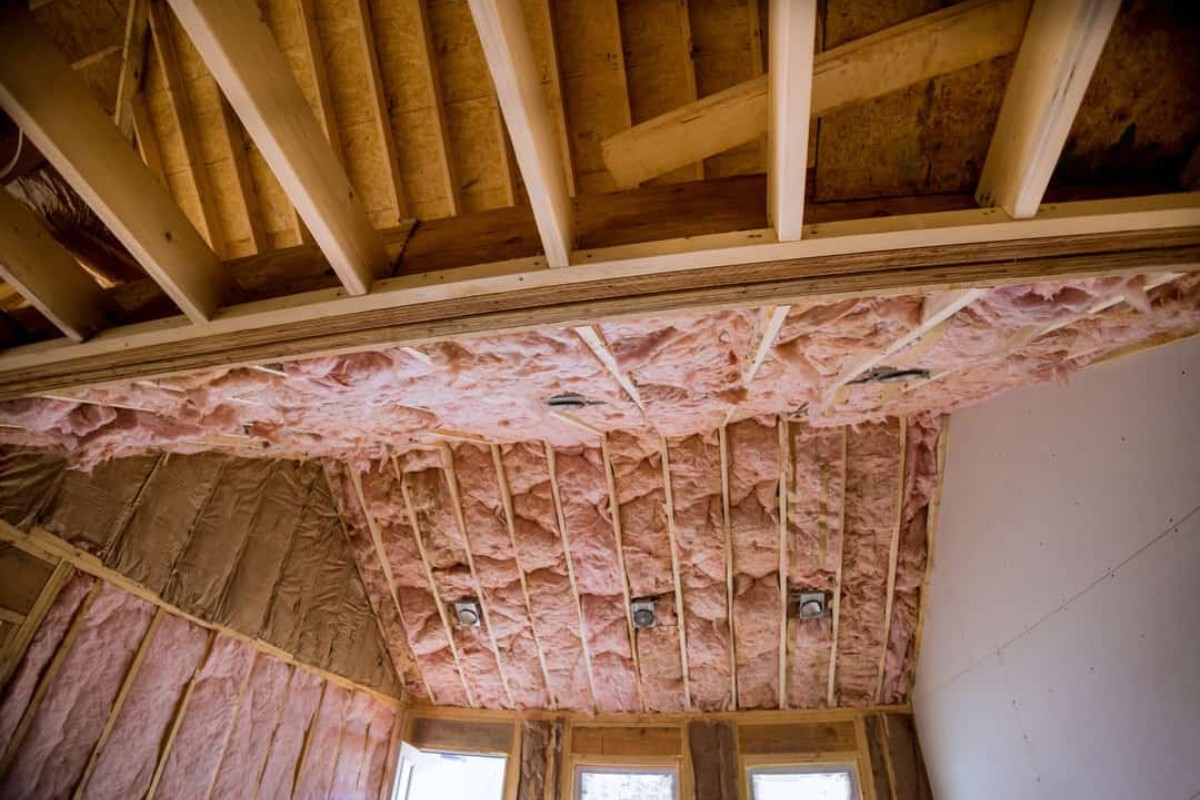Home>Home Maintenance>What Type Of Expenses Are Home Maintenance And Supplies
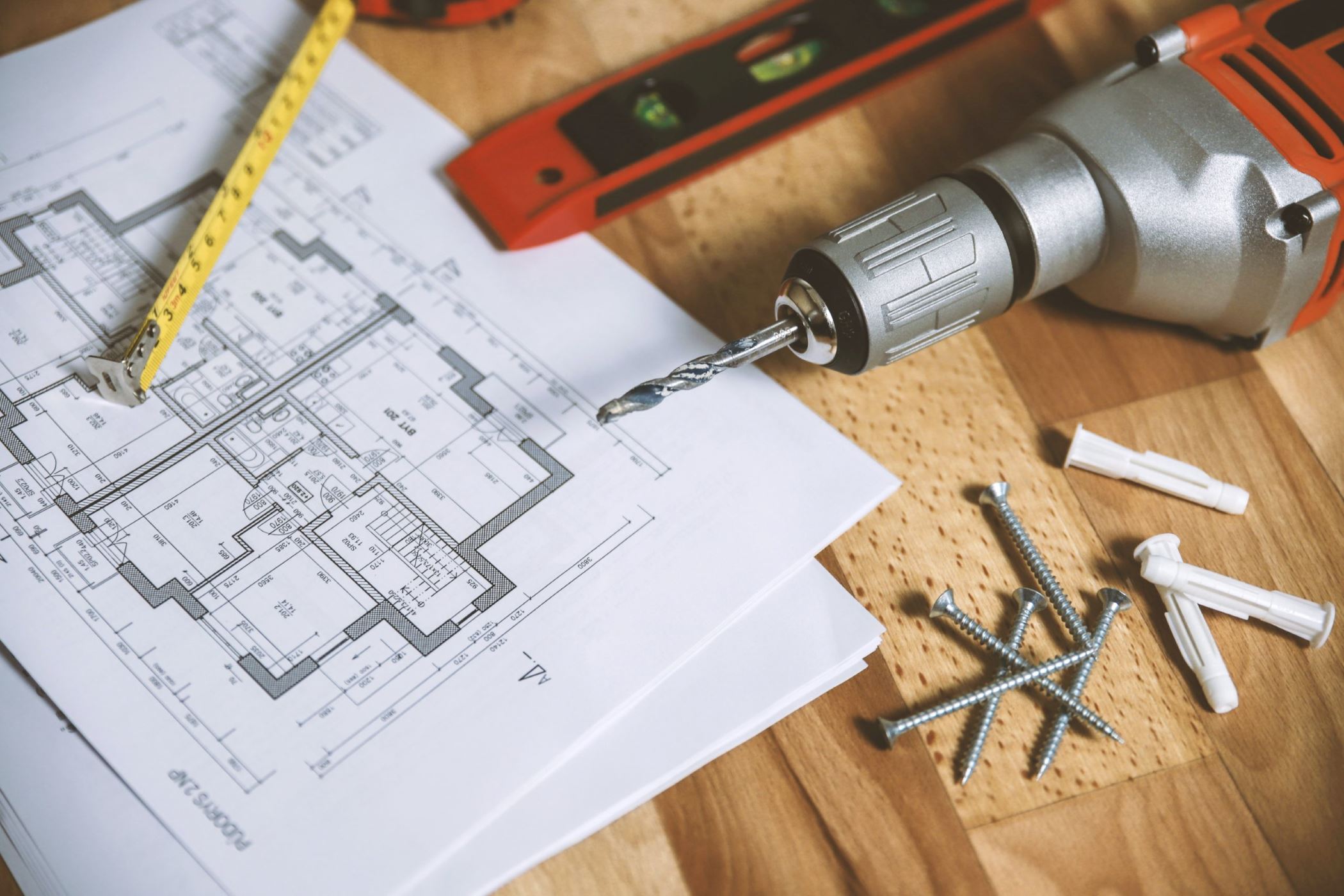

Home Maintenance
What Type Of Expenses Are Home Maintenance And Supplies
Modified: March 6, 2024
Learn about the various expenses related to home maintenance and supplies, including repairs, renovations, and essential tools. Enhance the longevity and functionality of your home with proper upkeep and necessary equipment.
(Many of the links in this article redirect to a specific reviewed product. Your purchase of these products through affiliate links helps to generate commission for Storables.com, at no extra cost. Learn more)
Introduction
Welcome to the world of home maintenance and supplies! As a homeowner, it is crucial to understand the significance of taking care of your property and ensuring its longevity. Home maintenance not only keeps your house in top shape but also helps prevent expensive repairs down the road. In this article, we will explore the various types of expenses associated with home maintenance and supplies, from regular upkeep to emergency repairs and home improvements.
When we talk about home maintenance and supplies, we are referring to the ongoing tasks and resources needed to keep your house in optimal condition. This includes everything from routine cleaning and upkeep to addressing wear and tear and making necessary repairs or improvements.
Home maintenance and supplies play a critical role in safeguarding your property’s structural integrity, ensuring the safety and longevity of its systems and components. Neglecting regular maintenance can lead to issues such as water damage, mold growth, pest infestations, and even safety hazards. By staying on top of these tasks, you can protect your investment and maintain a healthy and comfortable living environment.
Before we delve into the various types of expenses associated with home maintenance and supplies, let’s take a closer look at why they are so important.
Firstly, regular maintenance helps prevent small issues from turning into major problems. By identifying and addressing minor repairs promptly, you can avoid costly and extensive repairs in the future. Additionally, routine maintenance can extend the lifespan of your home’s systems and components, saving you money in the long run.
Secondly, scheduled upkeep enhances the overall value and appeal of your property. A well-maintained home not only creates a positive impression but also attracts potential buyers if you ever decide to sell. It also allows you to enjoy your living space to its fullest potential.
Lastly, maintaining your home properly contributes to a healthier and safer environment for you and your family. Regular cleaning, repairing leaks, and ensuring proper ventilation all help to mitigate health risks, such as allergies, respiratory issues, and exposure to harmful substances.
Now that we understand the importance of home maintenance and supplies, let’s explore the different types of expenses you may encounter along the way. From regular maintenance to seasonal upkeep, emergency repairs, and home improvements, each category comes with its own unique set of costs.
Key Takeaways:
- Regular home maintenance, such as cleaning supplies and HVAC upkeep, is crucial for preventing major issues and ensuring a safe and comfortable living environment. Planning ahead and DIY efforts can help save on expenses.
- Seasonal maintenance and emergency repairs are essential for protecting your home from seasonal elements and unexpected issues. Budgeting for these expenses and considering energy-efficient upgrades can lead to long-term savings.
Definition of Home Maintenance and Supplies
Home maintenance encompasses the ongoing tasks and efforts required to keep a property in optimal condition. It involves routine cleaning, upkeep, and repair work to ensure the functionality, safety, and longevity of the home’s systems and components.
Supplies, on the other hand, refer to the materials, tools, and products needed to carry out these maintenance tasks effectively. This includes everything from cleaning agents and lubricants to replacement parts and specialized equipment.
Home maintenance can be broadly classified into two categories: regular maintenance and seasonal maintenance. Regular maintenance comprises the day-to-day and weekly tasks necessary for the proper functioning of the house, while seasonal maintenance focuses on specific seasonal needs and challenges.
Regular maintenance involves activities such as cleaning, inspection, and minor repairs. This includes tasks like vacuuming, dusting, mowing the lawn, unclogging drains, and replacing air filters. The goal is to ensure that all systems and components, from HVAC systems to plumbing and electrical, are working smoothly and efficiently.
Seasonal maintenance, as the name suggests, is carried out to prepare and protect the property for specific seasons or weather conditions. This may include tasks like gutter cleaning and leaf removal in the fall, checking insulation and weatherproofing in winter, and inspecting and maintaining outdoor areas and landscaping in the spring and summer.
Emergency repair expenses come into play when unexpected issues and damages occur that require immediate attention. These expenses are usually unplanned and can range from minor repairs, such as fixing a leaky pipe or replacing a broken window, to major repairs resulting from natural disasters or significant system failures.
Home improvement expenses go beyond regular maintenance and involve upgrading or enhancing the property. This can include remodeling projects, adding new features or appliances, or making structural changes to improve the functionality, aesthetics, or energy efficiency of the home. Home improvement expenses are often discretionary and driven by personal preferences and lifestyle choices.
It is important to note that the costs associated with home maintenance and supplies can vary depending on factors such as the size and age of the property, the location, and the level of upkeep required. By understanding the different types of expenses involved, homeowners can better budget and plan for their home maintenance needs.
Importance of Home Maintenance and Supplies
Home maintenance and supplies may seem like mundane tasks, but they play a crucial role in maintaining the value, functionality, and overall well-being of your home. Here are some key reasons why home maintenance and supplies are of utmost importance:
1. Protecting your investment: Your home is likely one of the biggest investments you will make in your lifetime. Regular maintenance helps preserve the structural integrity of the property and prevents minor issues from turning into major problems. By proactively addressing maintenance needs, you can maintain the value of your investment and potentially increase its resale value.
2. Preventing costly repairs: Neglecting maintenance tasks can lead to small issues escalating into expensive repairs. For example, ignoring a minor roof leak can result in water damage, rotting of the structure, and the need for a full roof replacement. By staying on top of maintenance, you can catch problems early and save yourself from major repair expenses down the line.
3. Ensuring safety and health: Regular maintenance helps create a safe and healthy living environment for you and your family. Addressing electrical issues, repairing faulty wiring, and keeping fire alarms and carbon monoxide detectors in good working condition can prevent potential hazards. Additionally, maintaining clean and well-ventilated spaces helps reduce allergens, mold growth, and other health risks.
4. Enhancing energy efficiency: Proper home maintenance can significantly impact energy efficiency and reduce utility costs. By regularly cleaning and maintaining heating, cooling, and ventilation systems, you can ensure they are operating optimally. Insulating windows and doors, sealing air leaks, and maintaining proper insulation levels can also contribute to energy savings.
5. Improving comfort and quality of life: A well-maintained home provides a comfortable and enjoyable living environment. By addressing issues such as leaky faucets, malfunctioning appliances, or a poorly functioning HVAC system, you can enhance your daily comfort and quality of life. Additionally, well-maintained outdoor areas create inviting spaces for relaxation and entertainment.
6. Increasing curb appeal: The exterior of your home is the first impression visitors or potential buyers have. Regular maintenance, such as landscaping, exterior painting, and maintaining a clean appearance, can greatly enhance the curb appeal of your property. This not only makes you proud to come home but also increases the desirability of your home in case you decide to sell in the future.
7. Promoting peace of mind: Lastly, staying on top of home maintenance provides peace of mind. Knowing that your home is in good condition and that you have taken the necessary steps to protect it from potential issues can alleviate stress and worry.
By recognizing the importance of home maintenance and supplies, you can prioritize these tasks and allocate the necessary resources to keep your home in excellent condition. Remember, prevention is key, and investing time and money in maintenance now can save you from costly repairs and potential headaches later on.
Regular Maintenance Expenses
Regular maintenance expenses refer to the ongoing costs associated with the day-to-day and weekly tasks needed to keep your home in good condition. These expenses are recurring and necessary for the proper functioning and longevity of your property. While some regular maintenance tasks can be done by homeowners themselves, others may require professional services. Let’s explore some common regular maintenance expenses:
- Cleaning supplies: Keeping your home clean and tidy is an essential part of regular maintenance. This includes purchasing cleaning supplies such as detergents, disinfectants, brooms, mops, vacuum cleaners, and window cleaning solutions. These supplies typically need to be replenished periodically.
- Utilities: Regular maintenance also involves the cost of utilities needed to power and water your home. This includes electricity, water, gas, and potentially internet and cable services. These utilities enable you to carry out daily tasks and keep your home functioning smoothly.
- Lawn care and landscaping: If you have a yard or outdoor space, regular maintenance may require expenses related to lawn care and landscaping. This can include purchasing lawn mowers, trimmers, and gardening tools, as well as seeds, fertilizers, weed control products, and plants.
- Air filters and HVAC maintenance: Maintaining a clean and properly functioning HVAC (heating, ventilation, and air conditioning) system is important for indoor air quality and energy efficiency. This may involve regular replacement of air filters, which can range in cost depending on filter type and size. Additionally, scheduling professional HVAC maintenance or servicing can incur expenses.
- Plumbing maintenance: Regular maintenance of your plumbing system is crucial to prevent issues such as leaks, clogs, and water damage. This may involve expenses for drain cleaners, plungers, and pipe insulation, as well as periodic professional plumbing services for inspections and maintenance.
- Paint and touch-up: Over time, walls and surfaces may require touch-ups or repainting to maintain their appearance and protect against wear and tear. The cost of paint, brushes, rollers, and other painting supplies is a regular maintenance expense.
- Light bulbs and fixtures: Replacement of light bulbs and fixtures is a routine maintenance task. The cost of purchasing bulbs, whether traditional or energy-efficient LED bulbs, can add up over time.
- Smoke alarms and CO detectors: Regularly testing and replacing batteries in smoke alarms and carbon monoxide (CO) detectors is essential for safety. These batteries need to be replaced periodically, in addition to the cost of the alarms and detectors themselves.
It is important to budget and plan for these regular maintenance expenses to ensure that your home remains in optimal condition. By proactively addressing these tasks and allocating the necessary funds, you can avoid potential issues and maintain a comfortable and well-maintained living environment.
Examples of Regular Maintenance Expenses
Regular maintenance expenses are an integral part of homeownership. Let’s explore some common examples of regular maintenance expenses that you may encounter:
- Cleaning supplies: This includes the cost of purchasing cleaning agents such as all-purpose cleaners, glass cleaners, toilet cleaners, and floor cleaners. Additionally, you may need to invest in cleaning tools like microfiber cloths, sponges, and scrub brushes.
- Utilities: Regular maintenance expenses include the cost of utilities like electricity, water, and gas. These recurring expenses are necessary for running appliances, heating and cooling your home, and providing water for daily use.
- Lawn care and landscaping: If you have a yard, regular maintenance expenses may include the cost of purchasing gardening tools like shovels, rakes, and trimmers. You may also need to budget for lawn care products such as fertilizers, weed control chemicals, and grass seeds.
- Air filters and HVAC maintenance: Changing air filters regularly is an important part of HVAC maintenance. The cost of air filters can vary depending on the type and size needed for your system. Additionally, scheduling professional HVAC maintenance or servicing can require a fee.
- Plumbing maintenance: Regular maintenance expenses for plumbing may include purchasing drain cleaners, plungers, and pipe insulation. It is also wise to budget for occasional professional plumbing services, such as inspections or drain cleaning.
- Paint and touch-up: As your home ages, there may be a need for touch-ups or repainting. Budgeting for paint, brushes, rollers, and other painting supplies is necessary for regular maintenance. This expense ensures that your home’s appearance stays fresh and protects the surfaces.
- Light bulbs and fixtures: Regular maintenance includes the cost of replacing light bulbs as they burn out. You may need to budget for traditional incandescent bulbs or opt for more energy-efficient LED bulbs. Additionally, if you decide to update or replace light fixtures, that expense should also be considered.
- Smoke alarms and CO detectors: Regularly testing and replacing batteries in smoke alarms and carbon monoxide (CO) detectors is crucial for safety. The cost of batteries and the alarms themselves should be factored into your regular maintenance expenses.
Remember, these are just a few examples of regular maintenance expenses. The specific costs you encounter may vary depending on your home’s size, location, and individual needs. By budgeting for regular maintenance expenses and planning accordingly, you can ensure that your home remains well-maintained and functional for years to come.
Read more: What Are The Different Types Of Insulation
Seasonal Maintenance Expenses
Seasonal maintenance expenses are the costs associated with tasks performed at specific times of the year to prepare and maintain your home for different seasons and weather conditions. These expenses ensure that your home remains in optimal condition and can withstand the challenges posed by changing seasons. Let’s explore some common examples of seasonal maintenance expenses:
- Gutter cleaning: As autumn arrives, leaves and debris can accumulate in your gutters, potentially clogging them and causing water damage. Hiring professionals or investing in gutter cleaning tools and equipment is a typical seasonal maintenance expense.
- Weatherproofing and insulation: Before winter, it’s important to inspect your home for air leaks and ensure proper insulation. Expenses may include caulk for sealing gaps, weatherstripping for doors and windows, and insulation materials for attics, basements, and crawl spaces.
- Heating system maintenance: Before the cold winter months, it’s beneficial to have your heating system inspected and serviced. This may involve hiring a professional technician to clean and tune up your furnace or heat pump, ensuring its optimal performance. The cost of this service should be considered as a seasonal maintenance expense.
- Air conditioning maintenance: As summer approaches, it’s important to ensure that your air conditioning system is working efficiently. This may involve scheduling professional maintenance, cleaning or replacing air filters, and addressing any issues that may arise. The cost of AC maintenance is a typical seasonal expense.
- Lawn and garden preparation: In preparation for spring and summer, you may incur expenses for lawn care and gardening. This includes purchasing seeds, fertilizers, soil amendments, and plants. Additionally, you may need to invest in gardening tools and equipment to maintain your outdoor space.
- Pool maintenance: If you have a pool, seasonal maintenance is essential to ensure its cleanliness and proper operation. This may involve the cost of pool cleaning supplies, chemicals, and equipment, as well as occasional professional servicing.
- Outdoor furniture and equipment: Seasonal maintenance also includes the cost of maintaining and preparing outdoor furniture, grills, and other equipment. This may involve cleaning, repairing, or replacing items to ensure they are ready for use during the respective season.
- Roof inspection and maintenance: Periodic roof inspections and maintenance can help identify and address potential issues early on. This may involve hiring professionals to assess the condition of your roof, repair any damage, and replace shingles or other roofing materials if necessary.
Keep in mind that the specific seasonal maintenance expenses you encounter may vary based on factors such as your geographical location, climate, and the features of your home and property. By budgeting for these seasonal maintenance expenses and planning ahead, you can ensure that your home remains well-maintained and prepared for each season’s challenges.
Examples of Seasonal Maintenance Expenses
Seasonal maintenance expenses are essential for keeping your home in top shape throughout the year. Here are some common examples of seasonal maintenance expenses that you might encounter:
- Gutter cleaning: As leaves and debris accumulate during the fall season, gutter cleaning becomes necessary to prevent clogging and water damage. You may choose to hire professionals or purchase gutter cleaning tools and equipment.
- Weatherproofing and insulation: As winter approaches, it’s important to inspect your home for air leaks and ensure proper insulation. Expenses may include purchasing caulk for sealing gaps, weatherstripping for doors and windows, and insulation materials for attics, basements, and crawl spaces.
- Heating system maintenance: Before the cold winter months, it’s a good idea to have your heating system inspected and serviced. This can involve hiring a professional technician to clean and tune up your furnace or heat pump, ensuring optimal performance. The cost of this service should be considered as a seasonal maintenance expense.
- Air conditioning maintenance: Prior to the summer season, it’s important to check your air conditioning system for efficiency and functionality. Expenses may include professional maintenance, air filter replacements, and addressing any issues that may arise with the system.
- Lawn and garden preparation: As spring approaches, you may need to incur expenses for lawn care and gardening. This can include purchasing seeds, fertilizers, soil amendments, and plants, as well as investing in gardening tools and equipment to maintain your outdoor space.
- Pool maintenance: If you have a pool, seasonal maintenance is crucial for its cleanliness and proper operation. This may involve the cost of pool cleaning supplies, chemicals, and occasional professional servicing to ensure the pool is ready for use during the summer months.
- Outdoor furniture and equipment: Seasonal maintenance also includes the cost of maintaining and preparing outdoor furniture, grills, and other equipment. This can involve cleaning, repairing, or replacing items to ensure they are in good condition and ready for use during the respective season.
- Roof inspection and maintenance: Scheduling periodic roof inspections and maintenance is important to identify and address any potential issues. This may include hiring professionals to assess the condition of your roof, repair damage, and replace shingles or other roofing materials if needed.
Remember that the specific seasonal maintenance expenses you encounter may vary depending on factors like your location, climate, and the features of your home. By budgeting for these seasonal maintenance expenses and planning ahead, you can ensure that your home is well-prepared for each season, reducing the risk of damage and ensuring its longevity.
Regular home maintenance and supplies expenses include things like lawn care, cleaning products, and minor repairs. It’s important to budget for these costs to keep your home in good condition.
Emergency Repair Expenses
Emergency repair expenses are unforeseen costs that arise when unexpected issues and damages occur in your home. These repairs are typically urgent and require immediate attention to prevent further damage or safety hazards. While emergency repairs can be financially burdensome, they are necessary to protect your home and ensure the well-being of its occupants. Let’s explore some common examples of emergency repair expenses:
- Plumbing emergencies: Burst pipes, severe leaks, or major blockages in the plumbing system can cause significant water damage. Emergency plumbing repairs may involve pipe repairs or replacements, fixing faulty valves, or addressing issues with the water heater or sewage system.
- Electrical repairs: Electrical emergencies such as power outages, electrical fires, or faulty wiring pose serious safety risks. Emergency electrical repairs may involve fixing electrical faults, repairing circuit breakers or outlets, or replacing damaged wiring.
- Roof repairs: Severe storms, fallen trees, or natural disasters can lead to roof damage, including leaks or structural issues. Emergency roof repairs may include patching leaks, replacing damaged shingles or tiles, or addressing structural damage to ensure the safety and integrity of your home.
- HVAC system failures: A malfunctioning heating or cooling system can leave you without the comfort you need, especially during extreme weather conditions. Emergency HVAC repairs may involve fixing the furnace, repairing the air conditioner or heat pump, or replacing key components to restore proper functioning.
- Appliance breakdowns: When essential appliances like refrigerators, ovens, or washing machines stop working, it can disrupt your daily routine. Emergency appliance repairs or replacements may be necessary to restore functionality and usability of the affected appliances.
- Structural damage: Events like earthquakes, floods, or accidents can cause significant structural damage to your home. Emergency structural repairs may involve reinforcing compromised beams or walls, repairing foundations, or shoring up damaged areas to ensure the stability and safety of your property.
- Security and safety issues: Break-ins, vandalism, or other security breaches can compromise the safety of your home and its occupants. Emergency repair expenses may include repairing damaged doors or windows, reinforcing security systems, or addressing any safety hazards identified.
Emergency repair expenses can vary widely depending on the extent of the damage and the specific repairs required. It’s essential to have emergency funds set aside or consider obtaining appropriate insurance coverage to help mitigate the financial impact of these unexpected repairs. Additionally, promptly addressing emergency repairs can minimize further damage and potentially save you from even costlier repairs in the future.
Examples of Emergency Repair Expenses
Emergency repair expenses are unexpected costs that arise when sudden issues and damages occur in your home, requiring immediate attention and action. These repairs are crucial for preventing further damage and ensuring the safety and functionality of your property. Here are some common examples of emergency repair expenses:
- Plumbing emergencies: Burst pipes, severe leaks, or major blockages in the plumbing system can cause significant water damage. Emergency plumbing repairs may involve pipe repairs or replacements, fixing faulty valves, or addressing issues with the water heater or sewage system.
- Electrical repairs: Electrical emergencies such as power outages, electrical fires, or faulty wiring pose serious safety risks. Emergency electrical repairs may involve fixing electrical faults, repairing circuit breakers or outlets, or replacing damaged wiring.
- Roof repairs: Damages to the roof caused by severe storms, fallen trees, or natural disasters can result in leaks or structural issues. Emergency roof repairs may include patching leaks, replacing damaged shingles or tiles, or addressing structural damage to ensure the safety and integrity of your home.
- HVAC system failures: A malfunctioning heating or cooling system can leave you without the comfort you need, especially during extreme weather conditions. Emergency HVAC repairs may involve fixing the furnace, repairing the air conditioner or heat pump, or replacing key components to restore proper functioning.
- Appliance breakdowns: When essential appliances like refrigerators, ovens, or washing machines stop working, it can disrupt your daily routine. Emergency appliance repairs or replacements may be necessary to restore functionality and usability of the affected appliances.
- Structural damage: Events like earthquakes, floods, or accidents can cause significant structural damage to your home. Emergency structural repairs may involve reinforcing compromised beams or walls, repairing foundations, or shoring up damaged areas to ensure the stability and safety of your property.
- Security and safety issues: Break-ins, vandalism, or other security breaches can compromise the safety of your home and its occupants. Emergency repair expenses may include repairing damaged doors or windows, reinforcing security systems, or addressing any safety hazards identified.
Emergency repair expenses can vary greatly depending on the extent of the damage and the specific repairs required. It’s wise to have emergency funds set aside or consider obtaining appropriate insurance coverage to help manage the financial impact of these unforeseen repairs. Taking swift action to address emergency repairs can minimize further damage, protect the value of your home, and ensure the safety and well-being of those who live in it.
Read more: What Type Of Insulation For Walls
Home Improvement Expenses
Home improvement expenses refer to the costs associated with enhancing or upgrading your home beyond regular maintenance and repairs. These projects are often driven by personal preference and are aimed at improving the functionality, aesthetics, comfort, or energy efficiency of your property. Home improvement projects can range from small-scale renovations to major remodeling endeavors. Let’s explore some examples of home improvement expenses:
- Kitchen remodel: Updating your kitchen can involve various expenses, such as replacing outdated appliances, installing new countertops and cabinets, upgrading lighting fixtures, or adding a backsplash. The cost will depend on the scope of the project and the materials chosen.
- Bathroom renovation: A bathroom renovation may include replacing fixtures like sinks, toilets, and showers, installing new flooring, updating lighting, or adding storage solutions. The cost will vary based on the size of the bathroom and the desired level of customization.
- Adding a room or expansion: Expanding your living space by adding a room or extending the existing structure can significantly increase both the functionality and value of your home. This could involve hiring professionals for architectural planning, obtaining necessary permits, and completing construction work.
- Energy-efficient upgrades: Investing in energy-efficient upgrades can save you money on utility bills in the long run. Examples include replacing old windows with energy-efficient ones, installing insulation, upgrading to energy-saving appliances, or installing a solar energy system.
- Deck or patio construction: Building or renovating an outdoor deck or patio can provide additional space for relaxation and entertaining. Expenses may include purchasing materials such as timber or composite decking, installing outdoor lighting, or adding furniture and accessories.
- Interior or exterior painting: It’s amazing how a fresh coat of paint can transform the look and feel of your home. Whether it’s updating interior walls or rejuvenating the exterior, painting expenses include purchasing paint, primer, brushes, rollers, and other necessary supplies.
- Landscaping and outdoor improvements: Enhancing your outdoor spaces can increase curb appeal and create inviting areas for enjoyment. Expenses may include purchasing plants, trees, and shrubs, installing irrigation systems, adding outdoor lighting, or constructing walkways and retaining walls.
- Smart home technology: Integrating smart home technology can enhance convenience, security, and energy efficiency. This may include installing smart thermostats, automated lighting systems, video doorbells, or smart home security systems.
Keep in mind that home improvement expenses can vary widely based on the scope and complexity of the project, as well as the quality of materials and finishes chosen. It’s important to plan and budget accordingly, considering both immediate cost and long-term benefits when deciding on home improvement projects.
Examples of Home Improvement Expenses
Home improvement expenses are investments made to enhance and upgrade your home beyond regular maintenance and repairs. These projects can range from minor renovations to major remodeling endeavors, aimed at improving functionality, aesthetics, comfort, and energy efficiency. Here are some common examples of home improvement expenses:
- Kitchen remodel: Updating your kitchen can involve various expenses, such as replacing outdated appliances, installing new countertops and cabinets, upgrading lighting fixtures, or adding a backsplash. The cost will depend on the scope of the project and the materials chosen.
- Bathroom renovation: A bathroom renovation may include replacing fixtures like sinks, toilets, and showers, installing new flooring, updating lighting, or adding storage solutions. The cost will vary based on the size of the bathroom and the desired level of customization.
- Adding a room or expansion: Expanding your living space by adding a room or extending the existing structure can significantly increase both the functionality and value of your home. This could involve hiring professionals for architectural planning, obtaining necessary permits, and completing construction work.
- Energy-efficient upgrades: Investing in energy-efficient upgrades can save you money on utility bills in the long run. Examples include replacing old windows with energy-efficient ones, installing insulation, upgrading to energy-saving appliances, or installing a solar energy system.
- Deck or patio construction: Building or renovating an outdoor deck or patio can provide additional space for relaxation and entertaining. Expenses may include purchasing materials such as timber or composite decking, installing outdoor lighting, or adding furniture and accessories.
- Interior or exterior painting: It’s amazing how a fresh coat of paint can transform the look and feel of your home. Whether it’s updating interior walls or rejuvenating the exterior, painting expenses include purchasing paint, primer, brushes, rollers, and other necessary supplies.
- Landscaping and outdoor improvements: Enhancing your outdoor spaces can increase curb appeal and create inviting areas for enjoyment. Expenses may include purchasing plants, trees, and shrubs, installing irrigation systems, adding outdoor lighting, or constructing walkways and retaining walls.
- Smart home technology: Integrating smart home technology can enhance convenience, security, and energy efficiency. This may include installing smart thermostats, automated lighting systems, video doorbells, or smart home security systems.
The costs associated with home improvement projects can vary depending on factors such as the size of the project, desired quality of materials and finishes, and the need for professional services. It’s important to carefully plan and budget for these expenses to ensure that the improvements you make align with your goals and lifestyle.
Cost-saving Tips for Home Maintenance and Supplies
Looking to save money on home maintenance and supplies? With some planning and strategic choices, you can effectively manage your expenses while still keeping your home in excellent condition. Here are some cost-saving tips to consider:
- Plan ahead: Establish a home maintenance budget to anticipate and allocate funds for regular upkeep and repairs. By planning ahead, you can spread out the costs and avoid financial strain when unexpected repairs arise.
- DIY where possible: Take on simple maintenance tasks yourself instead of hiring professionals. This includes tasks like painting walls, replacing air filters, unclogging drains, or patching small holes. Just ensure you have the necessary skills and tools to safely perform the tasks.
- Comparison shop: Before making any major purchases for your home, compare prices and options from different suppliers or retailers. Look for sales, discounts, or promotions to get the best value for your money.
- Consider second-hand options: For certain items like furniture, appliances, or tools, consider purchasing second-hand or thrifted items. You can often find quality items at more affordable prices, helping you save money while still outfitting your home nicely.
- Maintain a preventative maintenance routine: Regularly inspect and maintain your home to catch minor issues before they become major problems. This can save you from costly repairs down the line. Simple tasks like cleaning gutters, sealing windows, and checking for leaks can help prevent damage and save money in the long run.
- Opt for energy-efficient upgrades: While energy-efficient upgrades may have upfront costs, they can lead to long-term savings on utility bills. Install LED light bulbs, invest in energy-efficient appliances, and improve your home’s insulation to reduce energy consumption and lower your energy expenses over time.
- Shop in bulk: When buying supplies like cleaning products, light bulbs, or air filters, consider purchasing in bulk to take advantage of bulk discounts. This can save you money and ensure you have a stock of essential items on hand when needed.
- Regularly maintain your HVAC system: Keep your heating and cooling system in good condition by cleaning or replacing air filters regularly. This simple maintenance task not only improves air quality but also prevents strain on the system, helping it run more efficiently and potentially reducing energy costs.
- Reuse and repurpose: Instead of always buying new, look for opportunities to reuse or repurpose existing items in your home. Repainting furniture, using old containers for storage, or repurposing old clothing into cleaning rags are just a few examples. Get creative and give new life to items you already have.
- Take advantage of DIY tutorials and resources: The internet is a treasure trove of DIY tutorials, tips, and tricks for home maintenance and repairs. Take advantage of online resources to learn new skills and tackle simple projects yourself, saving on labor costs.
By implementing these cost-saving tips, you can effectively manage your home maintenance and supplies expenses while still ensuring the well-being and functionality of your home. Remember, with a little planning, creativity, and proactive maintenance, you can achieve a comfortable and well-maintained home without breaking the bank.
Conclusion
Home maintenance and supplies are vital aspects of homeownership, ensuring the longevity, functionality, and value of your property. Whether it’s the regular upkeep, seasonal maintenance, emergency repairs, or home improvement projects, these expenses are an essential part of responsible homeownership. By understanding the various types of expenses involved and implementing cost-saving strategies, you can effectively manage your home maintenance budget and prioritize necessary tasks.
Regular maintenance expenses, such as cleaning supplies, utilities, lawn care, HVAC maintenance, and plumbing upkeep, are recurring costs that contribute to the overall well-being of your home. These expenses are necessary for the smooth operation of your property and can prevent larger issues from arising.
Seasonal maintenance expenses help prepare your home for different weather conditions and are essential for protecting your property. Investing in gutter cleaning, weatherproofing, HVAC maintenance, and outdoor upkeep can prevent potential damage caused by seasonal elements and ensure your home is in optimal condition throughout the year.
Emergency repair expenses are unexpected but crucial for addressing urgent issues and preventing further damage or safety hazards. Budgeting for these expenses or obtaining appropriate insurance coverage can help alleviate the financial burden when unexpected repairs arise.
Home improvement expenses allow you to personalize and upgrade your home beyond regular maintenance. Whether it’s kitchen and bathroom renovations, energy-efficient upgrades, outdoor improvements, or smart home technology, these projects can enhance both the functionality and value of your home.
To make the most of your home maintenance budget, consider implementing cost-saving tips such as planning ahead, DIY efforts where possible, comparison shopping, and opting for energy-efficient upgrades. Additionally, regular preventative maintenance and creatively repurposing items can help reduce expenses while maintaining the beauty and functionality of your home.
In conclusion, maintaining and beautifying your home requires a balance between managing expenses and prioritizing necessary tasks. By understanding the importance of different types of expenses and implementing cost-saving strategies, you can ensure that your home remains a safe, comfortable, and enjoyable place for you and your family.
Frequently Asked Questions about What Type Of Expenses Are Home Maintenance And Supplies
Was this page helpful?
At Storables.com, we guarantee accurate and reliable information. Our content, validated by Expert Board Contributors, is crafted following stringent Editorial Policies. We're committed to providing you with well-researched, expert-backed insights for all your informational needs.
